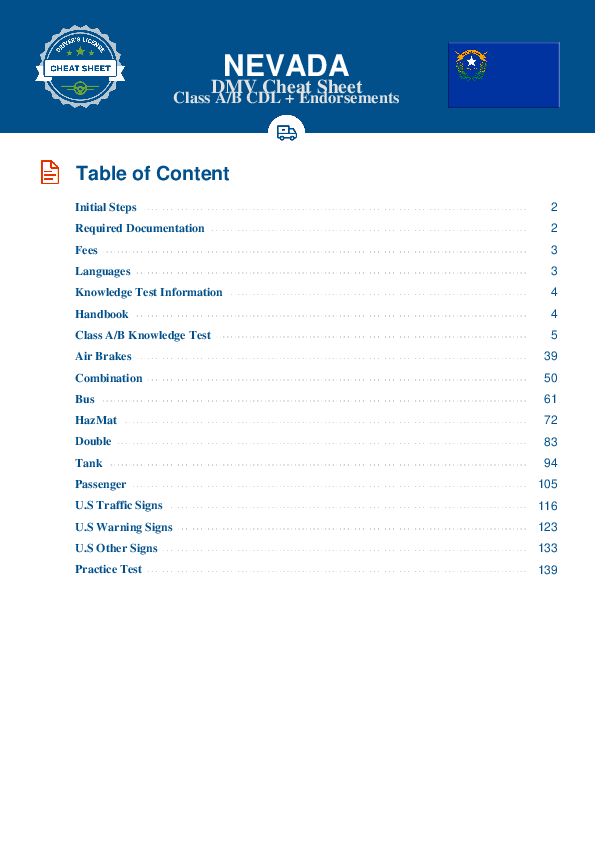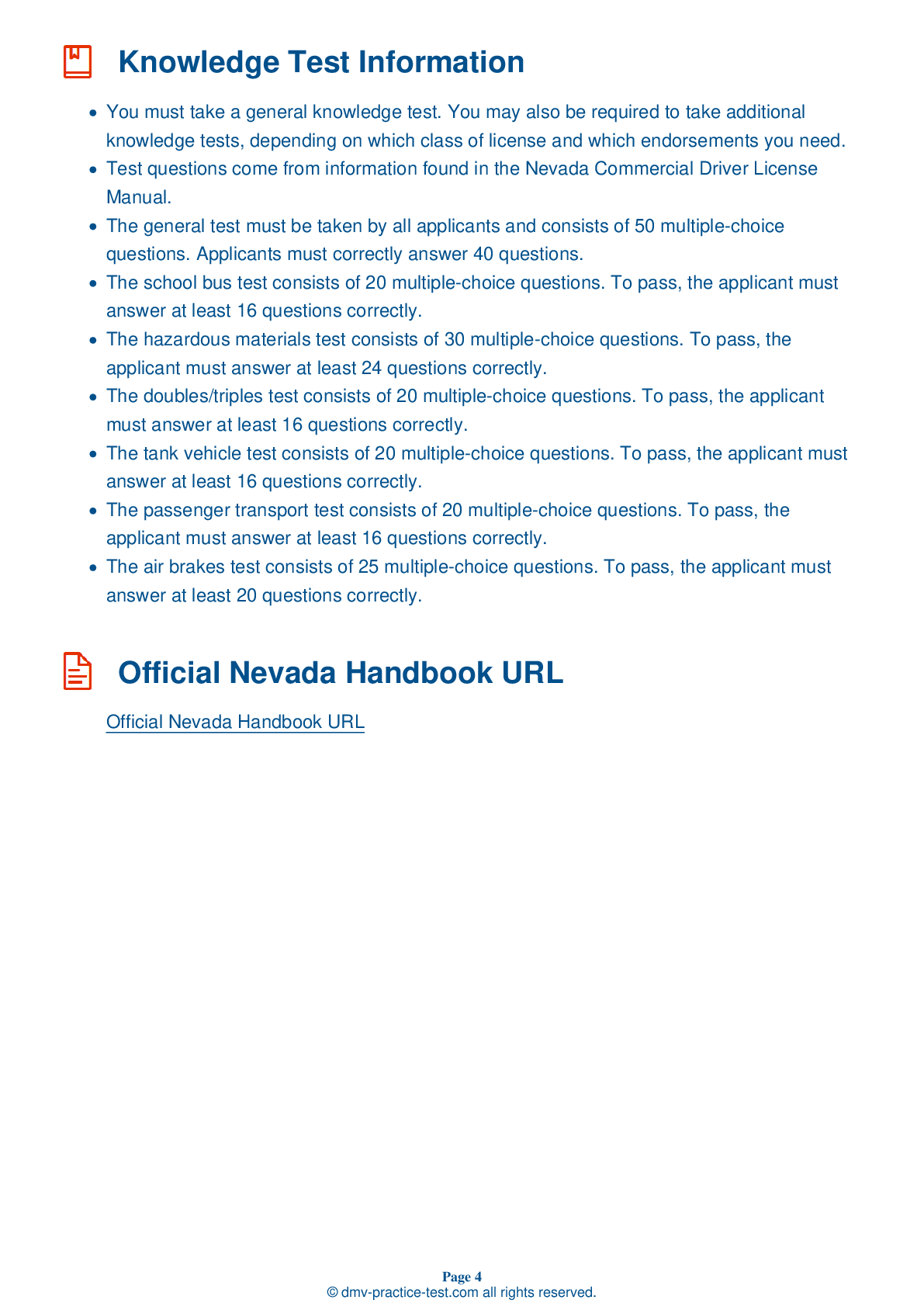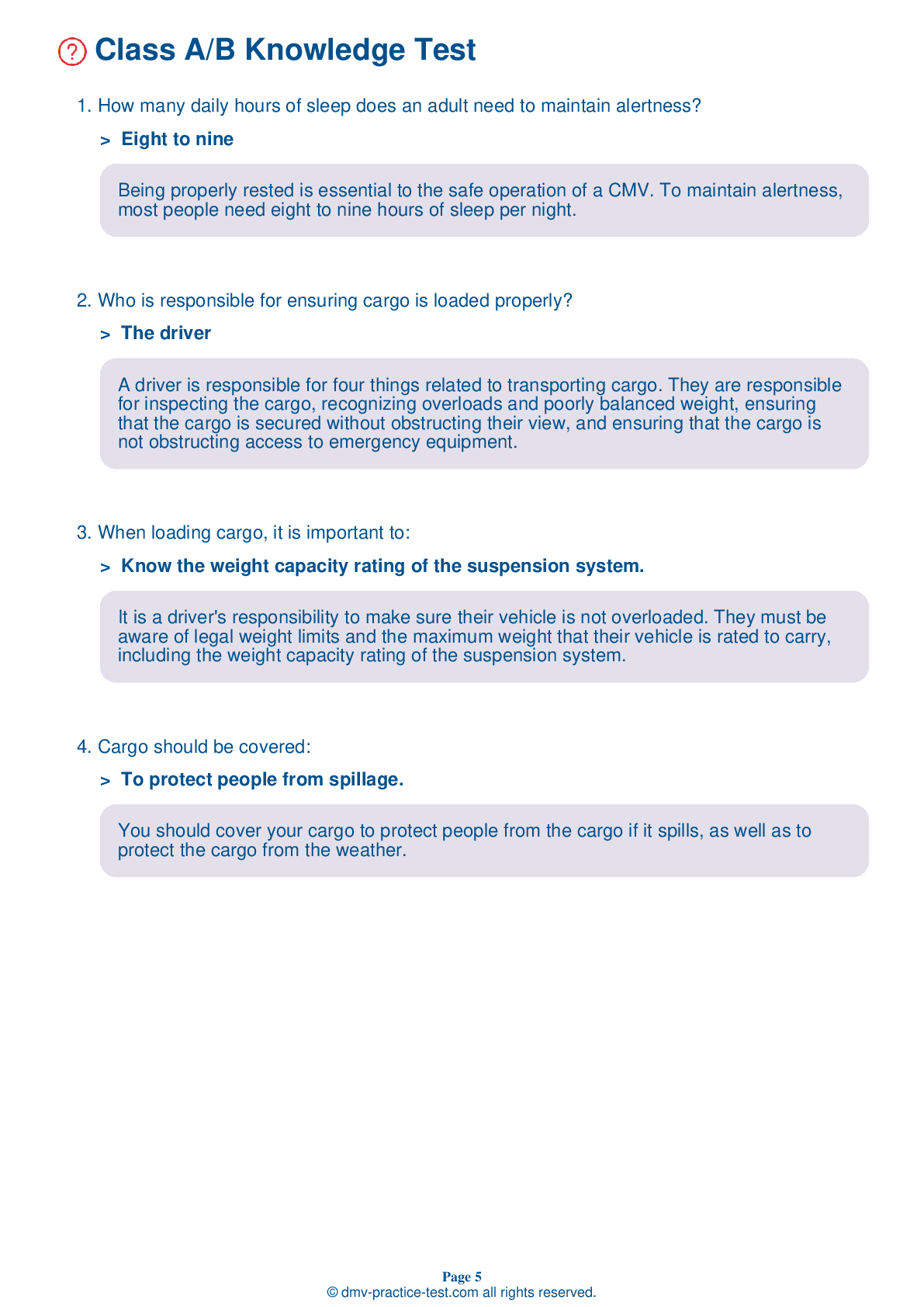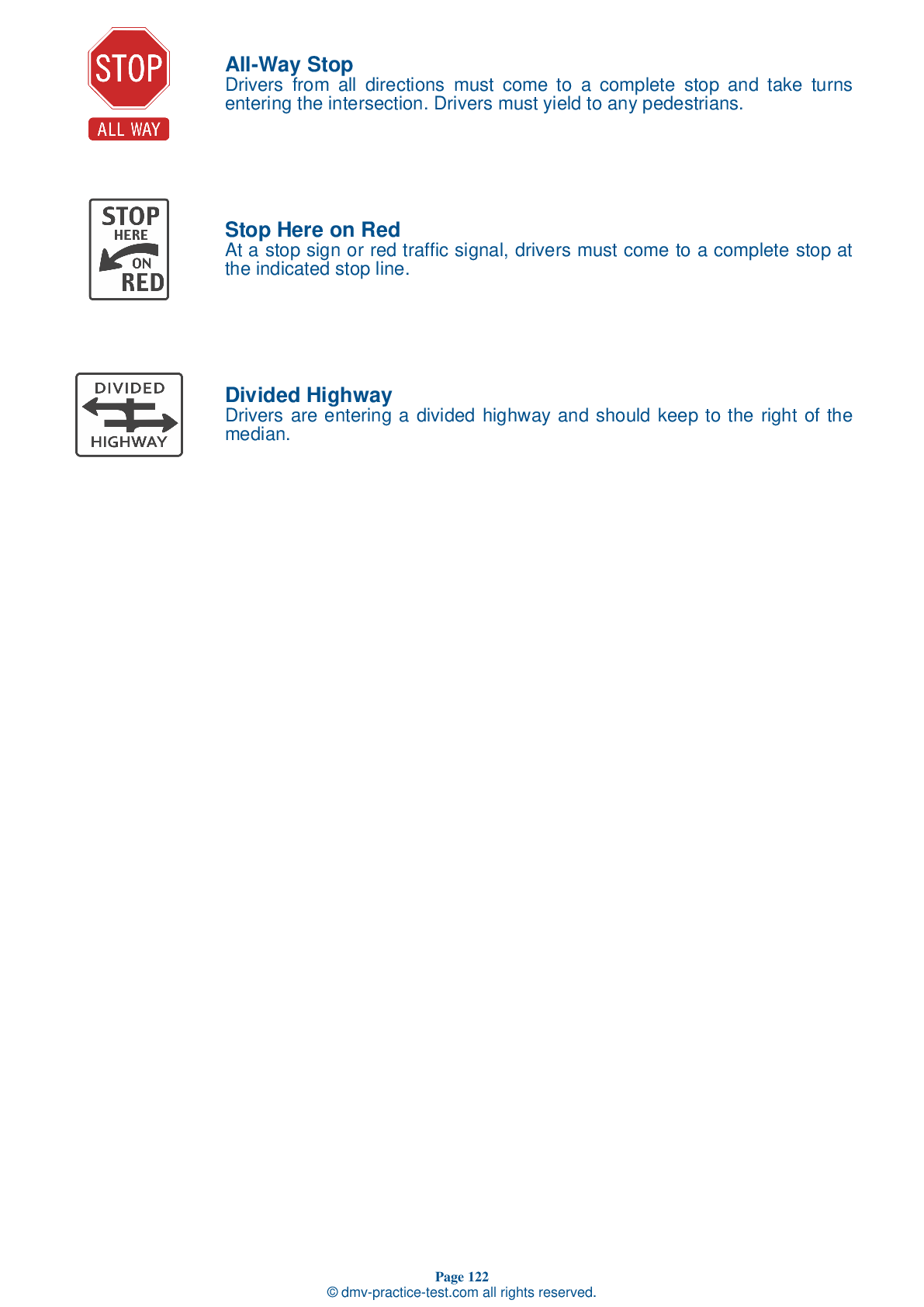Combination Vehicles Practice Test | Nevada 2025 #2
Train for FREE online with our Nevada CDL combination vehicle test. The official exam test consists of several obligatory parts, with all of them checking your knowledge of different blocks of road rules. If you need to obtain a NV combination license in 2025, practice as much as possible. Free sample tests published on our website will help you check and improve your knowledge and boost your grades. Please bear in mind that DMV requirements for issuing a combination license may vary from state to state.
1 . Trailers built before 1975 are:
Trailers built before 1975 are not required to have spring brakes. When parking a trailer without spring brakes, be sure to use wheel chocks to prevent the trailer from rolling.
2 . When the wheels of a trailer lock up:
A trailer may swing out and strike other vehicles if its wheels lock up. This is especially likely with lightly-loaded trailers.
3 . The trailer hand valve:
The trailer hand valve should not be used for parking. This could cause all of the air to leak out of the braking system, resulting in the brakes releasing. Instead, use the parking brake.
4 . During a trip, landing gear should be:
Landing gear, or trailer supports, should always be completely raised before a vehicle is driven. Landing gear that is not entirely raised could catch on railroad tracks or other hazards on the roadway.
5 . If a load is placed on one side of a trailer, the trailer:
If the weight of a load is placed primarily one side of a trailer, the trailer may lean, increasing the risk of a rollover.
6 . If colors are being used to distinguish glad hands, which color is used for emergency lines?
When trailer air lines are color-coded, the service lines are generally blue and the emergency lines are generally red.
7 . If the emergency air line loses pressure:
The tractor protection valve keeps air in the trailer's braking system should the trailer break away or develop a leak. A loss of air pressure in the emergency line will cause the tractor protection valve to open and the emergency trailer brakes to activate.
See the exact questions that will be on the 2025 Nevada DMV exam.
99.2% of people who use the cheat sheet pass the FIRST TIME
Lillian MCcranie explains how our CDL study guide was helpful in passing the exam and recommends it to everyone.
Cameron tells us how he purchased the CDL exam, and found it to be a useful tool which helped him pass the exam and find a job.



